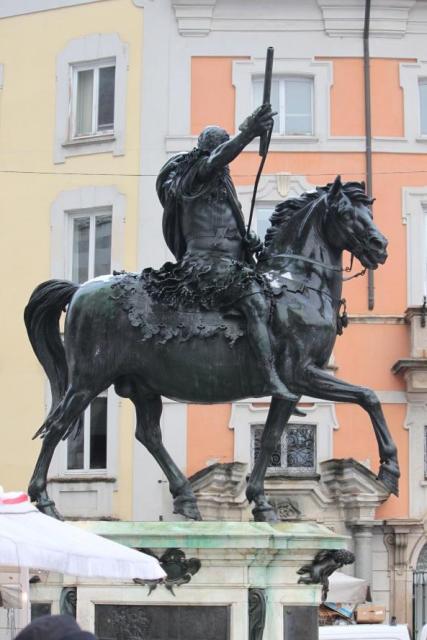
Prevailing accounts of the development of baroque sculpture take for granted the centrality of Gianlorenzo Bernini without probing the historical processes that led to the dominance of his art. The book Dr. Estelle Lingo is preparing takes the self-consciously ambitious sculptures of Bernini’s older contemporary, the Tuscan Francesco Mochi (1580-1654), as the entry point for an inquiry into the historical and cultural forces driving the transformation of sculpture in the first half of the seventeenth century. Mochi’s early biographer Giovanni Battista Passeri reported that the sculptor “always wanted to show himself a rigorous imitator of the Florentine manner.” Mochi’s determination to carry forward a Florentine and Michelangelesque tradition, while reconciling it with post-Tridentine religious imperatives, produced an extreme tension in his art that resulted in some of the most breathtaking sculptures of the century—though ultimately fracturing his career. In this lecture Dr. Lingo will present new work on Mochi’s highly unusual bronze equestrian monuments to Ranuccio I and Alessandro Farnese in Piacenza. The sculptures’ distinctive features, Lingo will argue, point to Mochi’s reflection upon Piacenza’s political circumstances and reveal unexpected aspects of the sculptor’s commitment to the Florentine tradition in a post-Tridentine climate of reform and censure.
Estelle Lingo is Associate Professor of Art History at the University of Washington. She specializes in early modern European art, especially sculpture. Her first book, François Duquesnoy and the Greek Ideal (Yale, 2007), examined seventeenth-century Flemish sculptor François Duquesnoy and his pursuit in Rome of a modern artistic practice in "the Greek manner." The study reconstructs the understanding of Greek art from 1550 to 1650 and the contributions of Duquesnoy's circle to the coalescence of the Greek ideal within European culture. This seventeenth-century vision of Greek art is shown to have formed the basis of Johann Joachim Winckelmann's early understanding of the formal perfections of Greek sculpture, overturning the longstanding assumption that no meaningful distinction between ancient Greek and Roman art was made prior to Winckelmann's work. Her current book project focuses on the Tuscan sculptor Francesco Mochi (1580-1654); the study takes Mochi's sculptures as the entry point for an inquiry into the historical and cultural forces reshaping sculpture at the beginning of the seventeenth century. Other research interests include Caravaggio, Gian Paolo Panini's Gallery Views, and the Italian perspective on the Grand Tour.
This talk is sponsored by the Department of the History of Art and Architecture and co-sponsored by the Program in Medieval and Renaissance Studies.

